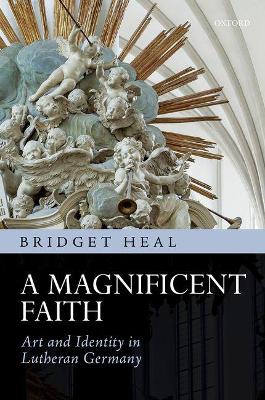A Magnificent Faith explains how and why Lutheranism - a confession that derived its significance from the promulgation of God's Word - became a visually magnificent faith, a faith whose adherents sought to captivate Christians' hearts and minds through seeing as well as through hearing. Although Protestantism is no longer understood as an exclusively word-based religion, the paradigm of evangelical ambivalence towards images retains its power. This is the
first study to offer an account of the Reformation origins and subsequent flourishing of the Lutheran baroque, of the rich visual culture that developed in parts of the Holy Roman Empire during the later seventeenth and early eighteenth centuries. The volume opens with a discussion of the legacy of the
Wittenberg Reformation. Three sections then focus on the confessional, devotional, and magnificent image, exploring turning points in Lutherans' attitudes towards religious art. Drawing on a wide variety of archival, printed, and visual sources from two of the Empire's most important Protestant territories - Saxony, the heartland of the Reformation, and Brandenburg - A Magnificent Faith shows the extent to which Lutheran culture was shaped by territorial divisions. It traces the
development of a theologically-grounded aesthetic, and argues that images became prominent vehicles for the articulation of Lutheran identity not only amongst theologians but also amongst laymen and women. By examining the role of images in the Lutheran tradition as it developed over the course of two centuries, A
Magnificent Faith offers a new understanding of the relationship between Protestantism and the visual arts.
- ISBN10 0198737572
- ISBN13 9780198737575
- Publish Date 10 August 2017
- Publish Status Active
- Publish Country GB
- Imprint Oxford University Press
- Format Hardcover
- Pages 324
- Language English
